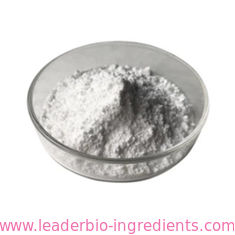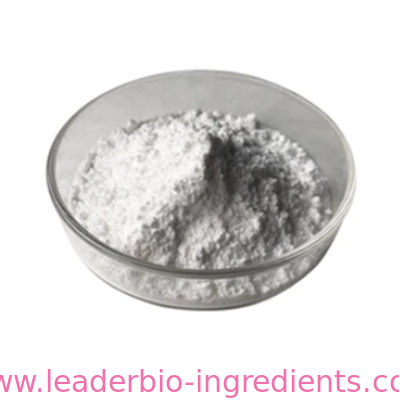| description |
S-Adenosyl-L-methionine (also called S-adenosyl methionine, S-adenosylmethionine, SAMe, or SAM-e in the United States or ademetionine in Europe, and also often abbreviated as SAM and AdoMet) is a chemical that is found naturally in the body. SAMe is sold in the United States as a dietary supplement.

S-Adenosyl-L-methionine was discovered in the early 1950s. It’s made in the body from methionine, an amino acid found in foods. It has been found to regulate key functions in living cells.
Abnormal levels of S-Adenosyl-L-methionine in the body have been reported in liver diseases and depression. This prompted researchers to investigate whr S-Adenosyl-L-methionine might be helpful in treating these conditions. The idea that S-Adenosyl-L-methionine might be helpful for osteoarthritis came from studies of S-Adenosyl-L-methionine for depression. Some of the participants in the depression studies who also had osteoarthritis said their joint symptoms improved when they took S-Adenosyl-L-methionine.
|
| Safety and Side Effects |
Information on the long-term safety of S-Adenosyl-L-methionine is limited because the participants in most studies took it only for short periods of time. However, in one study of alcohol-related liver disease, participants took S-Adenosyl-L-methionine for 2 years; in that study, no serious side effects were reported.
People with bipolar disorder (an illness characterized by mood swings, from depression to mania) should not take SAMe for their depressive symptoms except under the supervision of a health care provider because SAMe may worsen symptoms of mania.
Although S-Adenosyl-L-methionine has been used to treat cholestasis during pregnancy, its safety during pregnancy has not been established.
SAMe may decrease the effects of levodopa (L-dopa), a drug used to treat Parkinson’s disease. It’s also possible that SAMe might interact with drugs and dietary supplements that increase levels of serotonin (a chemical produced by nerve cells), such as antidepressants, L-tryptophan, and St. John’s wort.
There’s a theoretical concern about the use of SAMe by people who are immunocompromised (such as those who are HIV-positive). Immunocompromised people are at risk for Pneumocystis carinii infection, and SAMe enhances the growth of this microorganism.
Side effects of SAMe are uncommon, and when they do occur they are usually minor problems such as nausea or digestive upsets.
|
| Manufacturing Process |
S-Adenosyl methionine (SAM) is produced is prepared by cultivating of Saccharomyces cerevisiae.
One loopful of each of the microorganism strains (IFO 2342, IFO 2343, IFO 2345, IFO 2346, IFO 2347) was inoculated in 10 ml of a heat-sterilized culture medium adjusted to pH 6.0 and composed of 5.0 g/dl of glucose, 0.5 g/dl of polypeptone, 0.4 g/dl of KH2PO4, 0.4 g/dl of K2HPO4, 0.02 g/dl of MgSO4·7H2O and 0.2 g/dl of yeast extract, and cultivated with shaking at 28°C for 24 h.
1 L of a culture medium adjusted to pH 6.0 and composed of 10.0 g/dl of sucrose, 1.0 g/dl of yeast extract, 0.4 g/dl of K2HPO4, 0.01 g/dl of MgSO4·7H2O, 1.5 g/dl of urea (separately sterilized), 0.75 g/dl of Lmethionine, 0.02 g/dl of CaCl2·2H2O, 0.25 mg/dl of ZnSO4·7H2O, 0.25 mg/dl of FeSO4·7H2O, 125.0 mg/dl of MnSO4·6H2O, 2.0 μg/dl of CuSO4·5H2O, 2.0 μg/dl of H3BO3, 0.2 μg/dl of CoCl2·6H2O and 1.0 μg/dl of KI was put in a 2- liter fermentor and sterilized. Then, 5 ml of the seed culture broth prepared as above was inoculated in the culture medium and cultivated at 28°C for 72 h with aeration and agitation.
After the cultivation, the microbial cells were collected by centrifugal separation, washed once with physiological saline, suspended in 100 ml of 1.5 N perchloric acid, and shaken at room temperature for 1 h. The suspension was then centrifuged to remove the microbial cells, and the resulting liquid was adjusted to pH 4.5 by adding potassium hydrogen carbonate. The resulting precipitate of potassium perchlorate was removed by centrifugal separation to give an extract containing SAM. The amount of SAM in the extract was determined, and the amount of SAM based on the dry cells.
The extract in an amount of 0.2 g as SAM was passed through a column filled with 50 ml of Amberlite IRC-50 (H+ form), a weakly acidic cation exchange resin, to cause adsorption of SAM. 0.005 N acetic acid was passed through the column to wash it until the absorbance at 260 nm of the eluate becames less than 0.1. Thus, impurities were removed. Then, 0.1 N sulfuric acid was passed through the column, and SAM was eluted until the absorbance at 260 nm of the eluate becames less than 0.05. The eluate was treated with Amberlite IRA 900 resin (OH- form) to adjust its pH to 3.0, and then lyophilized to obtain SAM sulfate. The SAM based may be produced from SAM sulfate by treatment with potassium hydrogen carbonate. The purity of SAM was measured by cellulose thin-layer chromatography, paper chromatography and high-performance liquid chromatography. The yield of SAM based on the dry cells: IFO 2343-12.1%; IFO 2346-18.8%; IFO 2347-16.7%. |

